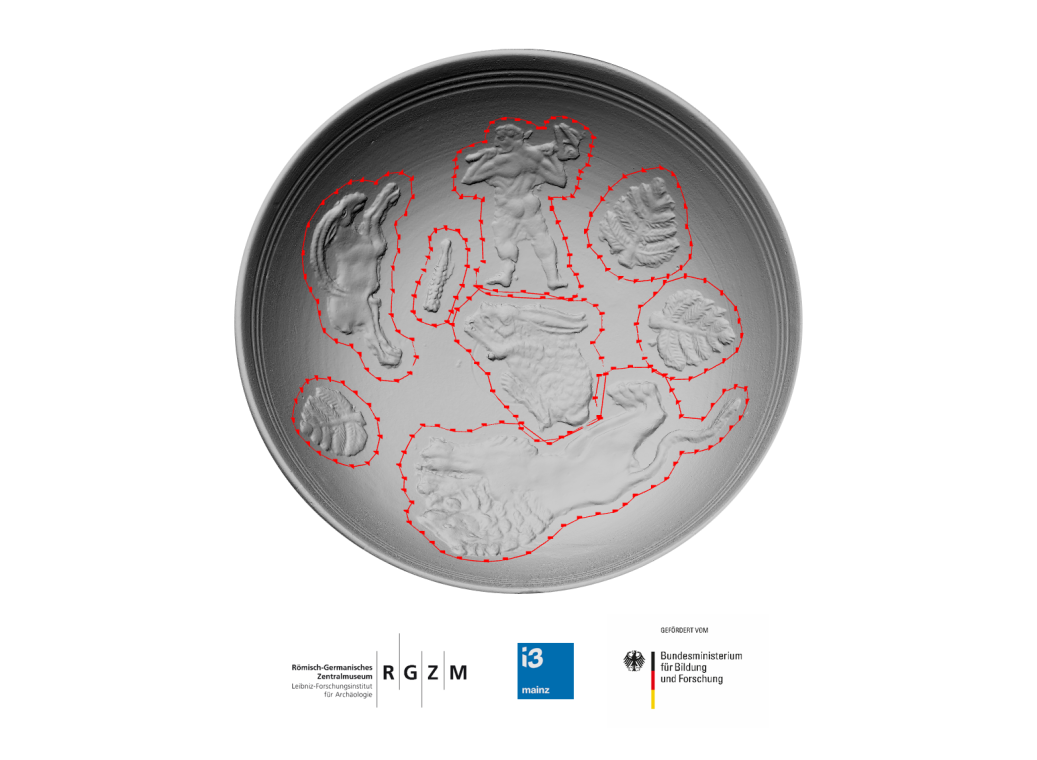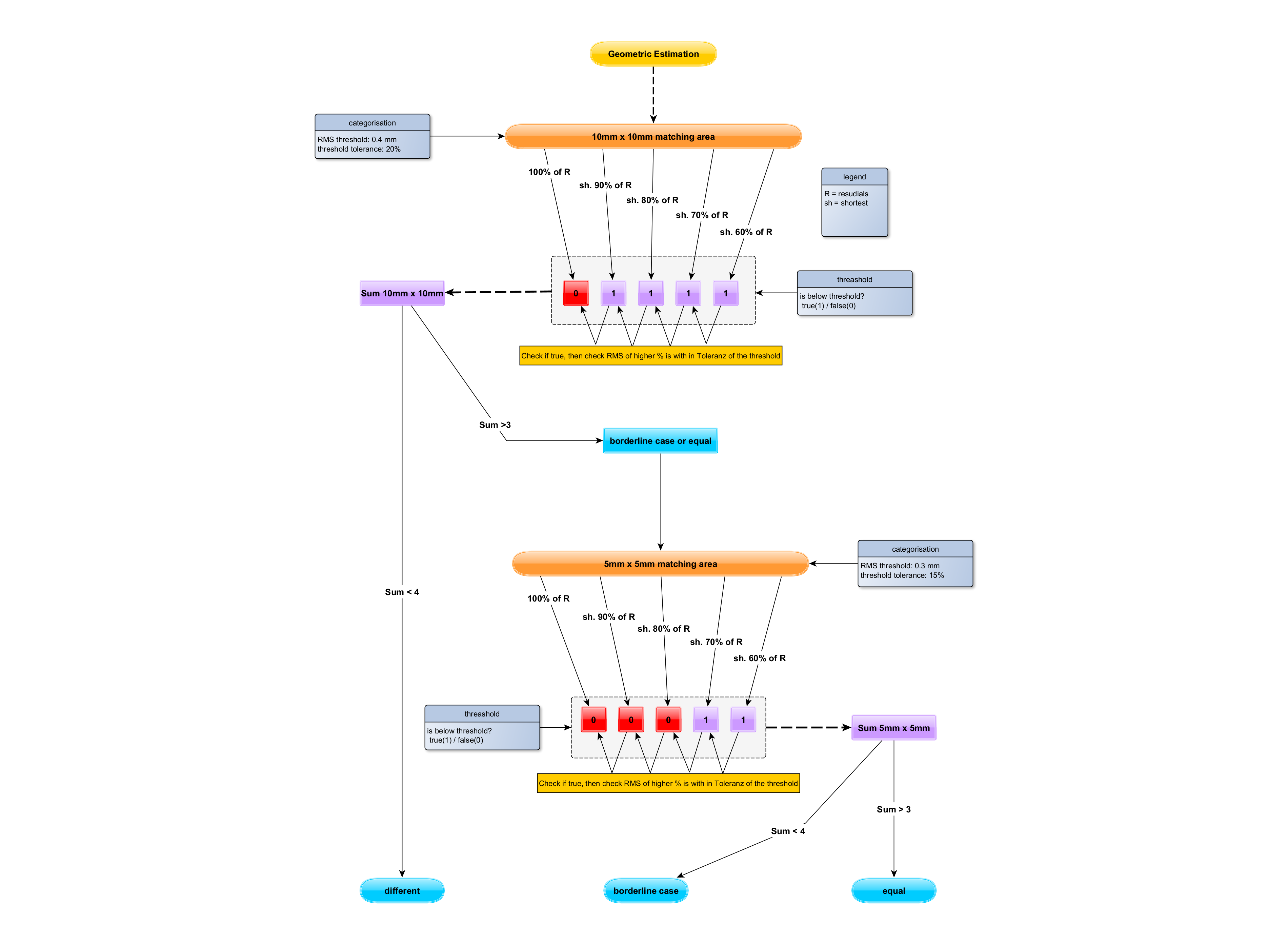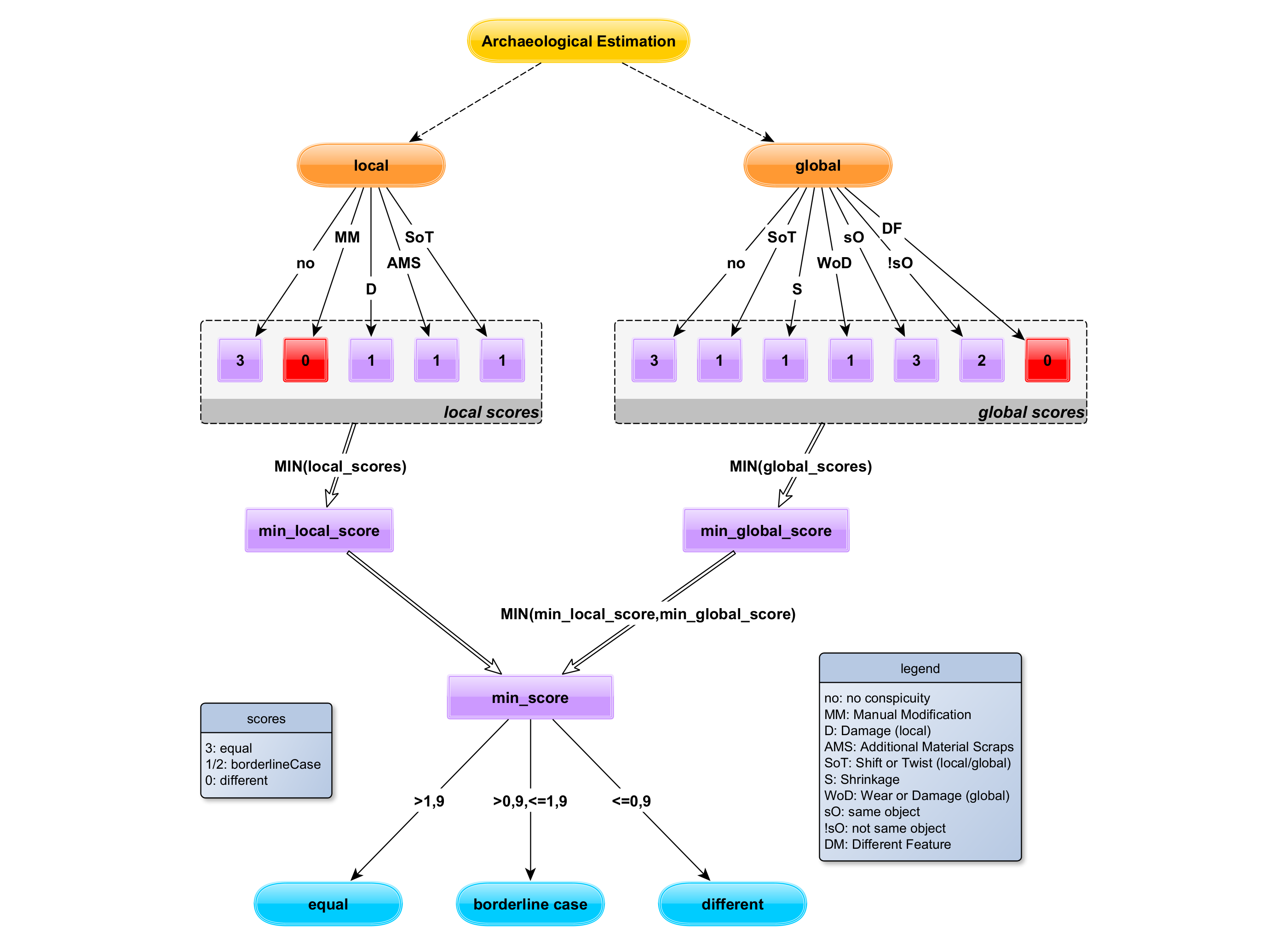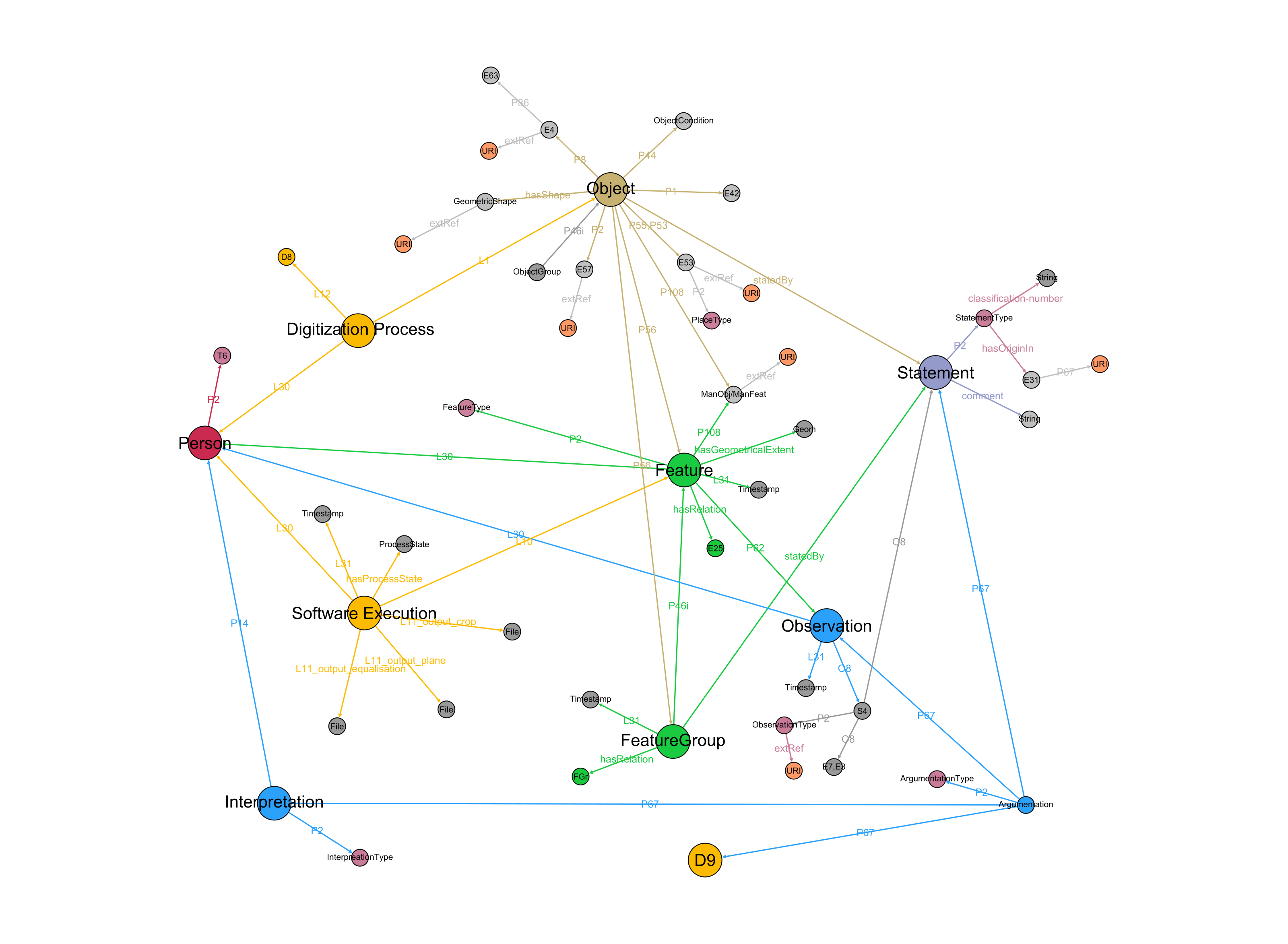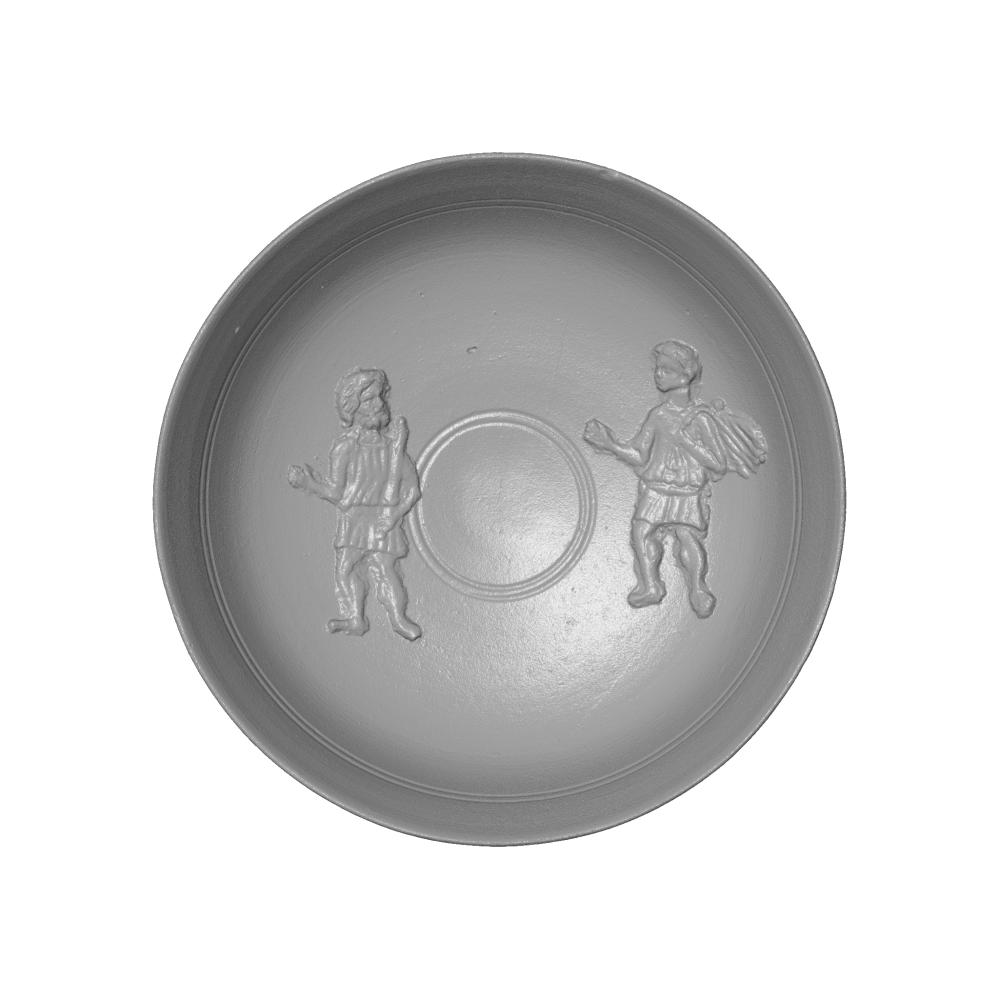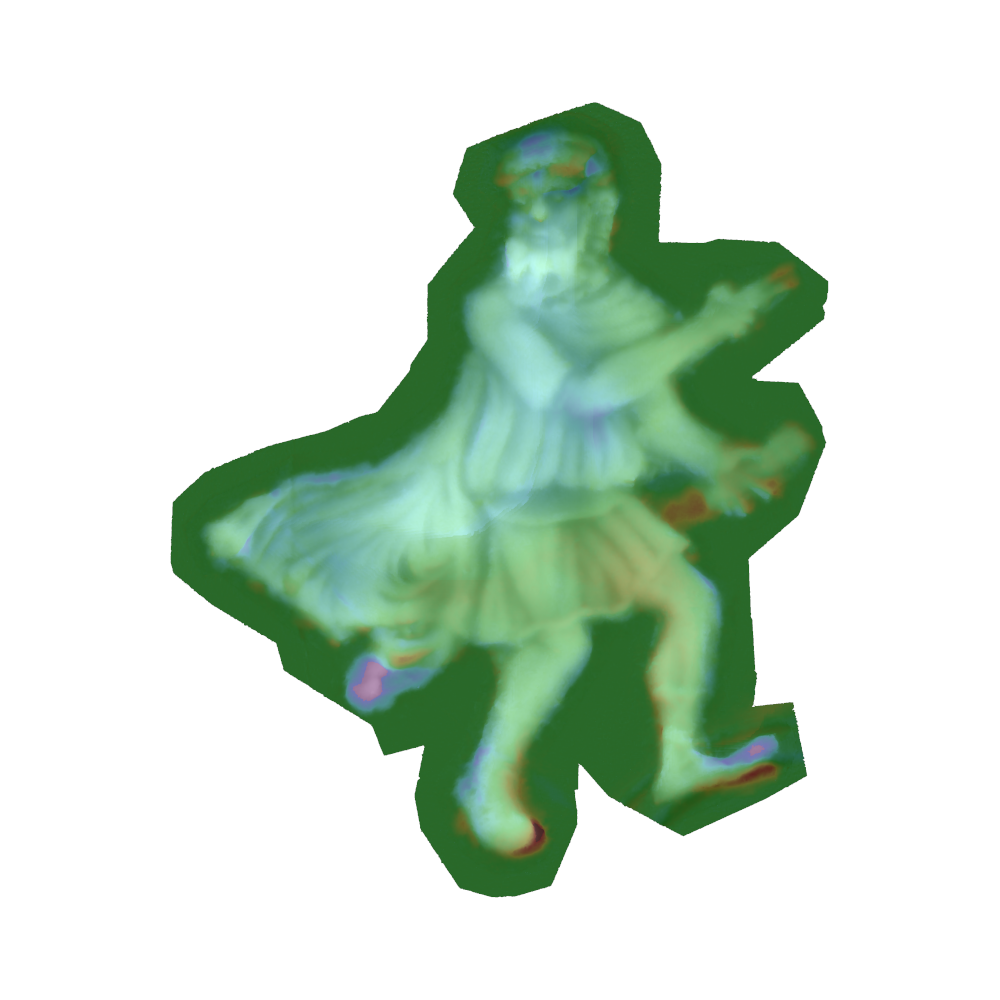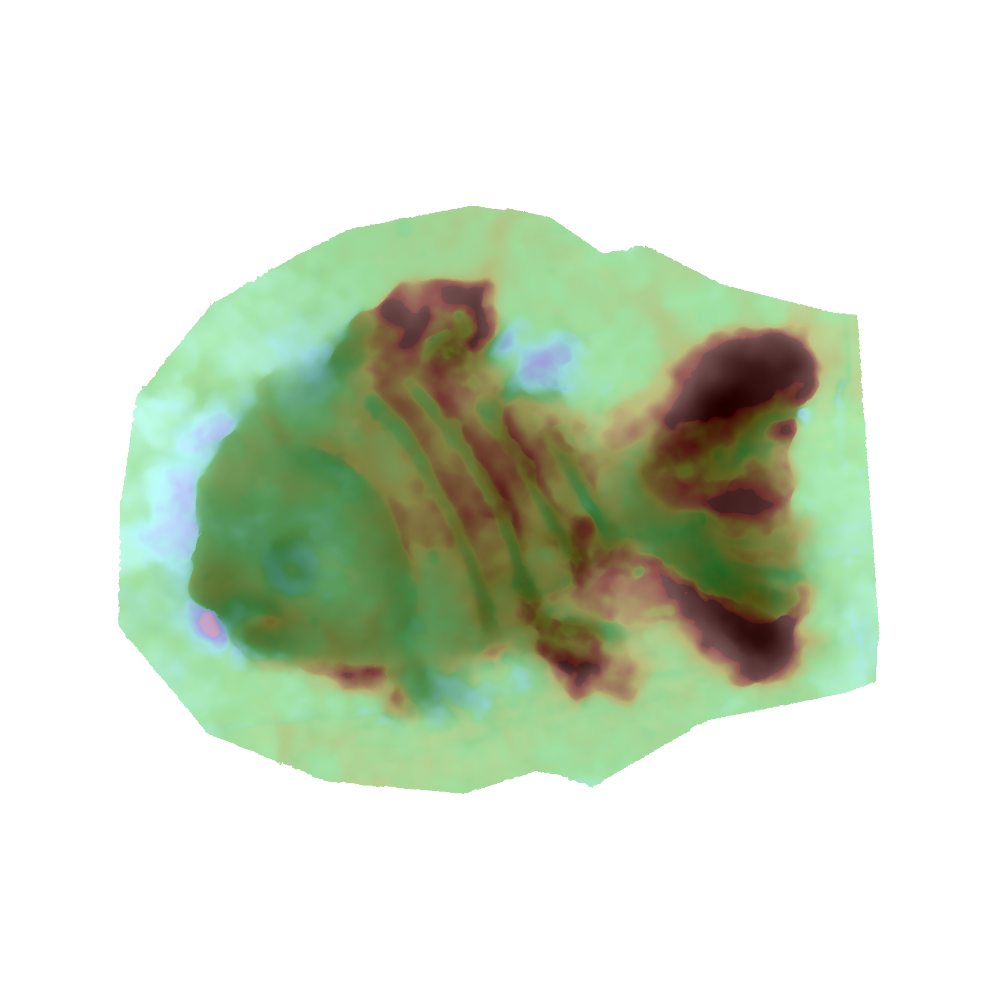ARS3D: African Red Slip Ware digital
3D DOCUMENTATION FOR A MULTI-PERSPECTIVE ANALYSIS OF A CENTRAL LATE ANTIQUE OBJECT TYPE
Background
Due to its striking decoration, the so-called African Red Slip Ware (ARS) is central to the understanding of Late Antique imagination. The collaborative project between i3mainz and the RGZM opens up the artefact in an innovative and sustainable way through 3D digitisation.
Characteristic of the North African bowls, plates, and jugs are their pictorial decorations applied mainly by appliqués and stamps. As mass-produced image carriers and everyday objects, the ARS spread throughout the empire.
The range of motifs includes mythological scenes as well as scenes from the Old and New Testament, circus, arena and hunting scenes as well as fish and plant motifs. The appliqués-decorated pottery thus provides insights into Late Antique imagination and its changes, as well as into the economic history of the period between the 3rd and 5th centuries AD in North Africa.
Previous documentation methods were not able to capture the objects and their decoration in an adequate way. The digital recording of the RGZM's collections by 3D scans allows to compare potentially identical appliqués and to assign them to their negative forms and the corresponding stamps.
Whereas vessel curvature previously falsified the assignment of appliqués and models, 3D analysis and visualisation tools now allow a comparison . Metadata created for each object increases the effectiveness and accuracy of determining image context and content. Issues related to the production of the ARS and the process flows within the workshops can be investigated through the analysis of the 3D data.
Florian Thiery, CC BY 4.0, via Wikimedia Commons
What do we do?
In the ARS3D-project, the following main tasks are performed:
The 324 ARS objects in the RGZM's collection were 3D digitised using structured light projection scanners. An ontology was developed to describe the meta- and para-data and the archaeological annotation in a semantic modelled graph. Tools arising from research software engineering, such as input forms, 3D visualisations and comparative analyses, can be used to systematically analyse and process the RGZM ARS collection.
3D Scanning
Textured 3D models are available for all ARS objects in the RGZM's collection.
The high-precision 3D data acquisition of the objects was carried out with the ATOS Triple Scan structured light scanner from GOM. After processing the scan data, a 3D model is created. In order to provide these 3D models with a realistic surface, the originals were photographed from different perspectives with the Nikon D800 system camera. After the generation of the 3D models and the subsequent connection of the 3D model and the photos with each other, a true color textured 3D model for each object is available for further analysis.
2.5D height image Generation
To visualise features of a 3D model, such as appliqués or appliqué moulds, these have been projected into a plane and processed into a 2.5D image.
For better visualisation, a height correction is applied to features on a non-plane object surface. This height correction is an approximation based on the object surface of the carrier object surrounding the feature.
Comparison
The comparison includes (1) Geometrical Comparison and (2) the Archaeological Comparison aspects.
Florian Thiery, CC BY 4.0
Geometrical Comparison
Geometric comparison of features by deformation analysis using image processing methods.
2.5D height images can be aligned to each other using iterative image processing. For this purpose, areas of a 2.5D image in the size of 5x5 mm and 10x10 mm are searched within a second 2.5D image. This enables the detection and visualisation of differences in position and height. A logical process can give a rough estimation if two 2.5D images are similar based on residuals in the position. Together with a viewer this should help to answer archaeological questions.
Jonas Veller / Florian Thiery, CC BY 4.0
Archaeological comparison
Archaeological comparison of features based on a semantically modelled
rule-set.
The archaeological comparison is based on the geometric data. Generally, local and global differences or similarities are distinguished. If conspicuousness is observed, an evaluation of the reason follows, e.g. damage, modifications during the manufacturing process, additional material residues, etc. Depending on the reason and spread of the change, a rule-based statement on the similarity of two features is made. A veto - combined with a detailed explanation - may be applied if the professional observation is discrepant with the selected factors.
Florian Thiery / Louise Rokohl, CC BY 4.0
Datamodel & Annotation
The data is stored in a graph structure. The classes, relations and rules are modelled in an ontology.
The ARS3D project carries out the following main tasks:
The developed ontology uses CIDOC CRM and various extensions. The data mainly consists of objects (E24), on which e.g. applications (features, E25) can be found. These objects can be described semantically, e.g. by the shape or time epoch. Features are described with observations, e.g. a human type man standing and wearing a beard. These observations lead to interpretations whose arguments can be observations.
Florian Thiery, CC BY 4.0
Technology
We rely on modern technologies.
In the ARS3D project we use the following technologies:
Search
The semantic annotations generated are available in a faceted search.
To get an insight into the African Red Slip Ware Data, various faceted search masks can be used: looking for objects, features, interpretations and comparisons. The object search allows one to look for object details, e.g. material or condition, as well as feature items and references in the Getty AAT and Wikidata. The feature search allows us to search for observation items, their activities and conditions, e.g. woman, sitting down and holding something in her hand. References of features to IconClass, Getty AAT and Wikidata are also possible. Furthermore, the interpretation search allows us to look for interpretations on ARS objects. The comparison search is the entry point to the comparison viewer. Here, e.g. two features which show global or local conspicuousness can be found.
long-term archiving & iDAI.objects
The 3D models are archived for the long term at the DAI and published in its database iDAI.objects.
The 3D models of the entire ARS objects as well as associated metadata and images are archived at the DAI for the long term. The 3D models are published in its database iDAI.objects (arachne).
Team
Institute
Funding
Project Head
Scientific Staff
Scientific Advice
Former Scientific Staff
Student Research Assistants
Publications
Unsere wissenschaftlichen Ergebnisse haben wir auf diversen nationalen und internationalen Konferenzen präsentiert.
Scientific Talks
Paper
Get in touch
Have we attracted your interest? Please get in touch with us.
Legal Notice
Impressum
Römisch-Germanisches Zentralmuseum
Leibniz-Forschungsinstitut für Archäologie
Ernst-Ludwig-Platz 2
55116 Mainz
Email: info(at)rgzm.de
full Impressum
